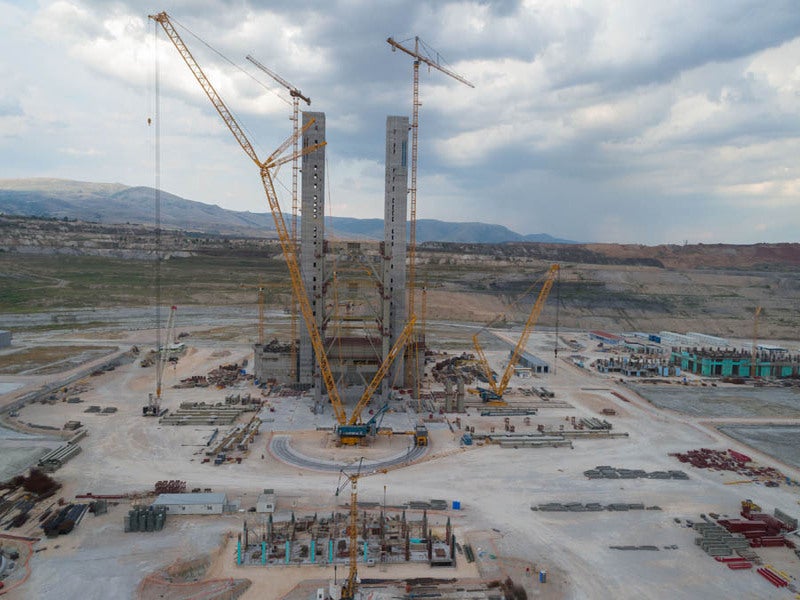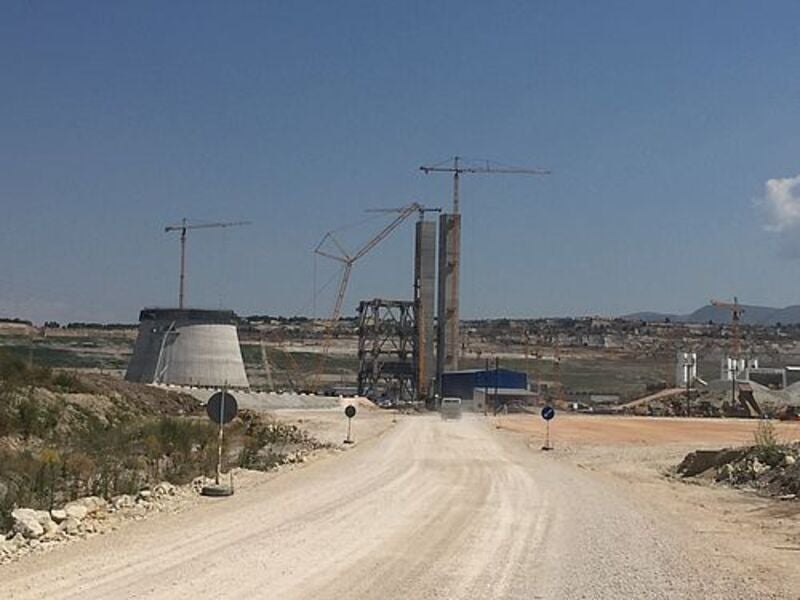The Ptolemaida power complex in the Western Macedonia Prefecture of Greece is being expanded with the addition of a new lignite-fired unit of 660MW capacity.
The new plant Ptolemaida V is being developed by Public Power Corporation (PPC), the biggest energy supplier in Greece, with an estimated investment of approximately £1.11bn (€1.32bn). It intends to expand the capacity of the power station to approximately.
The construction works on the expansion unit were started in 2016, with the start of commercial operations expected by 2022.
The new unit will expand the total electricity generation capacity of the Ptolemaida power station to 1.2GW if the three existing units within the complex continue to operate. It is also expected to deliver approximately 140MWth of thermal power for district heating.
Location and site details
The Ptolemaida lignite-fired thermal power project is located in the Ptolemaida industrial and mining region, in Western Macedonia, Greece.
The Ptolemaida V power block will occupy approximately 8.343acres within the 576acres existing Ptolemaida power complex premises. The new plant is being developed on the site of dismantled Komanos open-cast lignite mine, approximately 500km away from Athens.
Ptolemaida V coal-fired power plant make-up
The Ptolemaida V power plant will comprise a supercritical, pulverised lignite-fired power block with a total generating capacity of 660MW and a net efficiency of 41.5%.
The block features a steam generator, a steam turbine-generator, along with a provision for future installation of CO2 capture system.
The other components for the project include a 170m-tall cooling tower, an 820MVA generator step-up transformer, ash electrostatic precipitator, a wet flue gas desulfurisation (WFGD) unit, wastewater treatment system, a coal crusher unit, and service buildings.
Lignite consumption of Ptolemaida V
The fifth unit of the Ptolemaida power plant is estimated to consume approximately eight million tonnes (Mt) of lignite a year.
Financing
The Ptolemaida V coal-fired power project is being financed through approximately £609m (€700m) of loan from the German state-owned development bank KfW.
Ptolemaida lignite-fired power station
The existing Ptolemaida power complex comprises two 125MW units, namely II and III, and the 300MW unit IV with a net operational capacity of 550MW.
The Ptolemaida power complex originally comprised four units commissioned between 1959 and 1972, while the 70MW unit-I was decommissioned in 2010.
Contractors involved with the Ptolemaida V power project
Terna, a subsidiary of GEK Terna Group, and Hitachi Power Europe (HPE) were awarded the turnkey construction contract for the Ptolemaida V power project in March 2013.
Terna is responsible for the construction works, while HPE is accountable for the design and engineering works, as well as the supply of steam generator, steam turbine generator, flue gas cleaning system, and the balance of plant (BOP).
HPE subsidiaries Donges SteelTec and Meeraner Dampfkesselbau were engaged in
the steel construction and the delivery of pressure parts for the project respectively.
Babcock Borsig Steinmüller (now Bilfinger Engineering & Technologies) was awarded a contract worth approximately £3.42m (€4m) for the manufacturing and supply of two economisers, support tubes, wear protection, and boiler roof in July 2016.
Doka was contracted for the supply of earthquake-resistant SK175 formwork for the cooling tower construction of the plant in October 2017.
Kouvidis supplied cable protection equipment while Sarens was subcontracted by Terna Energy for the installation of columns and K-bracings of the main steel structure.
Athens-based Stagakis Construction Company utilised six hoist solutions from GEDA for the construction of the plant.
Penelis Consulting Engineers was contracted for structural verification of the boiler building, while AKSM provided the Scan2Bim 3D laser scanning services for two 135m-high boiler buildings.
Hamon Environmental supplied the electrostatic precipitators, while General Electric manufactured and supplied the generator step-up transformer.





